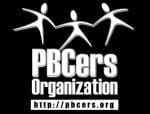Sometimes, the path to diagnosis takes many twists and turns.
This is true for people who have Primary Biliary Cholangitis (PBC), according to Gail from the PBC Society of Canada. In this video, she states how difficult it is to diagnose patients with this rare disease. Sometimes it is misdiagnosed as other autoimmune diseases.
Gail explains that there are not any specific symptoms to look for when diagnosing a patient with this disease. She was diagnosed through a liver biopsy, since blood tests could not confirm that she had the disease. There are various tests to determine if someone has primary biliary cholangitis.
Often, people may not get a yearly physical exam, which can cause them to remain undiagnosed. Even if one does get a yearly physical, the liver enzyme tests are not examined further.
If the enzyme tests are studied, there could be other reasons as to why a person has a higher than normal alkaline phosphate level. When the levels continuously rise higher and higher, a person should seek a specialist to determine the reason for the increase.
Should you be tested?
Women between the ages of 40 and 60 are most commonly diagnosed with PBC. This group should check to make sure their liver enzymes are not increasing.
Early diagnosis is essential to prevent the disease from worsening. Each person is different.
Are you living with PBC? What did the path to diagnosis look like for you? Share your experience with the Patient Worthy community!



